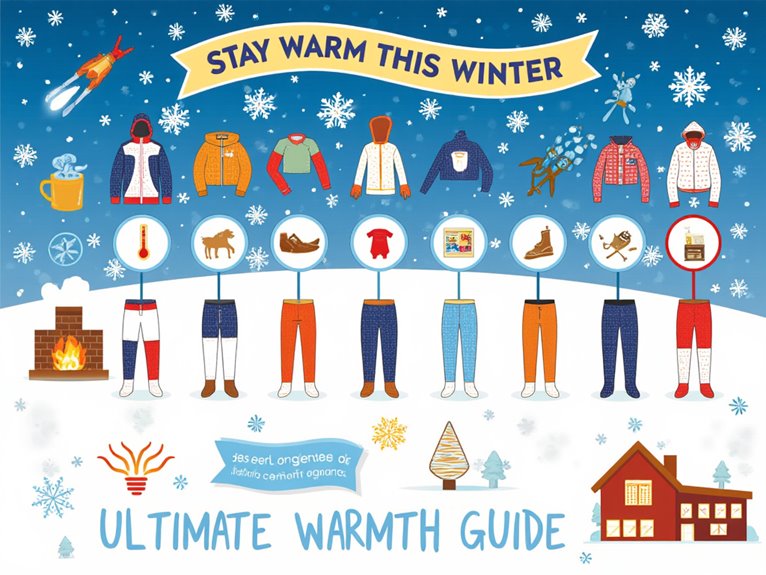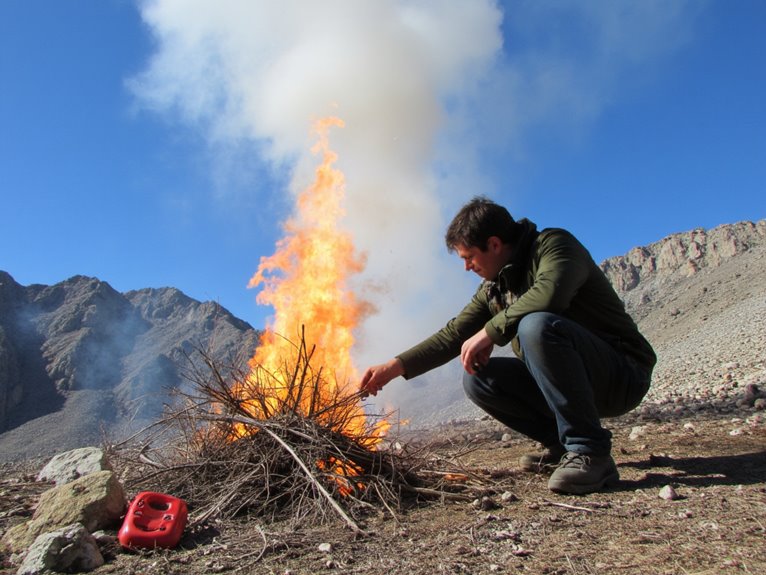Is It Safe for a Dog to Sleep in a Tent?
Dogs can safely sleep in tents when provided with a well-ventilated, comfortable, and familiar environment. A tent with breathable fabric, mesh panels, and water-resistant materials guarantees a safe and comfortable sleeping environment. Proper ventilation, temperature regulation, and anxiety mitigation are vital to prevent heat stress and discomfort. A comfortable fit, calming aids, and familiar comfort items can also promote relaxation. By considering these factors, you can create a safe and cozy sleeping space for your dog. To guarantee a peaceful camping experience, investigate the nuances of tent selection, ventilation, and emergency preparedness to keep your canine companion happy and healthy.
We are supported by our audience. When you purchase through links on our site, we may earn an affiliate commission, at no extra cost for you. Learn more. Last update on 15th January 2026 / Images from Amazon Product Advertising API.
Tent Size and Dog Comfort
When choosing a tent for your dog to sleep in, a crucial consideration is the interior space, as a tent that is too small can lead to discomfort and anxiety for your pet.
A tent that is too cramped can restrict your dog's movement, causing them to feel claustrophobic and stressed.
On the other hand, a tent with ample interior space allows your dog to stand up, turn around, and lie down comfortably.
Measure your dog's length and width to determine the minimum interior space required.
A good rule of thumb is to add 1-2 inches to your dog's measurements to provide a comfortable fit.
Ventilation and Air Quality
Proper ventilation and air quality are critical components of a safe and comfortable sleeping environment for your dog in a tent.
A well-ventilated tent guarantees that stale air is circulated out, and fresh air is circulated in, preventing the buildup of carbon dioxide and moisture.
This is especially important for dogs, as they are more sensitive to air quality than humans.
Some key considerations for maintaining good ventilation and air quality in a tent include:
Choosing a tent with mesh panels or windows to allow for airflow.
Providing adequate space in the tent, allowing for air to circulate around your dog.
Avoiding cooking or smoking inside the tent, which can lead to poor air quality.
Temperature Regulation Concerns
When camping with your dog, it's essential to contemplate the risks associated with extreme temperatures.
Both heat stroke and cold weather dangers can be life-threatening if not properly addressed, making temperature regulation a critical aspect of tent safety.
Heat Stroke Risks
Dogs, especially those with thick coats or brachycephalic breeds, are particularly susceptible to heat stroke in enclosed spaces like tents, where temperatures can quickly soar.
As the temperature inside the tent rises, your dog's body temperature can also increase rapidly, leading to heat stroke.
It's essential to take preventive measures to safeguard your dog's safety.
Some key considerations to avoid heat stroke include:
- Providing adequate ventilation in the tent to allow hot air to escape
- Avoiding tenting during the hottest part of the day (usually between 11 am and 3 pm)
- Monitoring your dog's temperature and behavior closely for signs of heat stress, and taking prompt action to protect them from harm
Cold Weather Dangers
In stark contrast to the risks of heat stroke, cold weather poses its own unique threats to a dog's safety while sleeping in a tent, particularly for short-haired or thin breeds that struggle to regulate their body temperature in chilly conditions.
Hypothermia is a significant concern, as dogs can quickly lose heat in cold environments. If your dog is shivering, whining, or showing signs of lethargy, it may be a sign of hypothermia.
To mitigate this risk, make certain your dog has a warm, insulated bed and consider using a heated bed or warm blankets. Additionally, choose a tent with good insulation and a waterproof design to keep your dog dry and protected from the elements.
Moisture and Humidity Issues
Condensation buildup inside the tent can lead to a damp and uncomfortable environment for your dog, making it essential to address moisture and humidity issues before camping with your pet companion.
A humid environment can exacerbate respiratory issues and make your dog more susceptible to illness.
To mitigate these issues, consider the following:
Choose a tent with breathable fabric and adequate ventilation to reduce condensation buildup.
Bring a waterproof blanket or mat to provide a dry surface for your dog to sleep on.
Pack a towel or absorbent cloth to dry your dog thoroughly after exercise or swimming.
Bug Infestations and Protection
When it comes to bug infestations and protection, there are several key considerations to ensure a safe and comfortable sleeping environment for your dog.
One crucial aspect is protecting the tent fabric from insect damage, while another is utilizing insect repellent treatments to deter pests.
Additionally, the effectiveness of netting barriers in keeping bugs at bay is also essential to explore.
Tent Fabric Protection
To safeguard your tent from unwanted critters and prevent damage, it's essential to prioritize tent fabric protection against bug infestations and other potential threats.
A damaged tent can lead to a ruined camping trip, as well as the discomfort and distress it can cause for you and your dog.
To maintain your tent's integrity, consider the following precautions:
- Regularly inspect your tent for signs of damage or wear, and repair or replace it as needed.
- Use a tent footprint or tarp to shield the bottom of your tent from moisture and abrasion.
- Store your tent in a dry, cool place when not in use to prevent mildew and pest infestations.
Insect Repellent Treatments
Apply insect repellent treatments to your tent fabric to prevent bug infestations and guarantee a comfortable camping experience with your dog.
Insect repellent treatments can be applied to the tent fabric before your camping trip or during setup. Look for products containing permethrin, a safe and effective insect repellent.
These treatments create an invisible barrier that repels mosquitoes, ticks, and other biting insects. By treating your tent fabric, you'll reduce the risk of bug bites and minimize the discomfort they can cause.
This is particularly important when camping with your dog, as they can be vulnerable to insect-borne diseases. With insect repellent treatments, you can enjoy a peaceful and bug-free camping experience with your furry companion.
Netting Barrier Effectiveness
In addition to insect repellent treatments, a netting barrier can serve as a reliable line of defense against bug infestations, providing a physical obstacle that prevents biting insects from penetrating the tent space.
This added layer of protection is vital in providing a comfortable and safe sleeping environment for your dog.
When choosing a netting barrier, consider the following key factors:
Mesh size: Opt for a mesh size that's small enough to keep out even the smallest insects.
Material: Choose a durable, breathable material that allows for airflow and won't irritate your dog's skin.
Coverage: Make sure the netting barrier covers all openings, including windows and doors, to prevent insects from entering the tent and guarantee a secure and peaceful sleeping space for your dog.
Noise and Anxiety Factors
Many tent campers underestimate the impact of noise and anxiety factors on their dog's ability to sleep safely and soundly in a tent.
Noises like rustling leaves, snapping twigs, or distant animal sounds can startle your dog, making it difficult for them to relax.
In addition, the confined space of a tent can exacerbate anxiety in dogs prone to claustrophobia.
To mitigate these issues, consider bringing familiar comfort items like your dog's favorite toy or blanket to provide reassurance.
You can also try calming aids like pheromone diffusers or calming treats to help your dog relax.
Furthermore, by acknowledging and addressing noise and anxiety factors, you can help create a more peaceful and restful sleeping environment for your dog.
Dog's Sleeping Arrangements Matter
In terms of ensuring a safe and comfortable sleeping experience for your dog in a tent, the sleeping arrangements matter greatly.
A well-designed sleeping space can make all the difference in your dog's ability to relax and get a good night's sleep.
Cozy Bedding Options
Three essential components of a comfortable sleeping arrangement for your dog in a tent are a supportive bed, a warm and cozy blanket, and a familiar comfort item or two.
These elements will help your dog feel relaxed and secure in the new environment.
A supportive bed supports your dog's joints, providing comfort, while a cozy blanket provides warmth and reassurance.
Familiar comfort items, such as a favorite toy or blanket, can also help reduce anxiety.
Orthopedic dog beds or thick blankets can provide the necessary support for your dog's joints.
Thermal blankets or heated beds can keep your dog warm on chilly nights.
Bring a familiar comfort item, like a favorite toy or blanket, to provide emotional comfort.
Comfortable Sleeping Spaces
One vital aspect of creating a comfortable sleeping space for your dog in a tent is the arrangement of their bed and surroundings, as this can profoundly impact the quality of their rest.
A well-organized sleeping area can help reduce anxiety and promote relaxation.
Consider the tent's floor space and layout to verify your dog's bed is positioned in a quiet, comfortable spot.
Avoid placing the bed near the tent's entrance, where drafts and noise can disturb your dog's sleep.
Instead, opt for a cozy corner or against a wall, providing a sense of security and tranquility.
Tent Material and Durability
Selecting a tent with durable, dog-friendly materials is crucial to guarantee a safe and comfortable sleeping environment for your furry companion.
The tent's material and durability play a significant role in ensuring your dog's safety and comfort. A tent with high-quality, pet-friendly materials can withstand your dog's natural behaviors, such as scratching and chewing.
When choosing a tent, consider the following key factors:
- Water-resistant and waterproof materials to keep your dog dry in rainy or snowy conditions
- Breathable fabrics to maintain a comfortable temperature and prevent overheating
- Durable stitching and seams to resist damage from your dog's movements
Emergency Escape and Safety
In the unlikely event of an emergency, having a tent that allows for a quick and easy escape is vital to safeguard your dog's safety.
You never know when a sudden storm might roll in or a wild animal might approach the campsite.
A tent with easy exit points, such as multiple doors or a simple release mechanism, can be a lifesaver.
Look for tents with features like color-coded clips or simple zippers that can be quickly opened in an emergency.
Additionally, consider the tent's floor plan and make certain there are no obstacles that could hinder a speedy exit.
Training Your Dog for Tent Sleeping
Teach your dog to calmly enter and exit the tent by practicing gradual exposure to the tent's interior, starting with short sessions and gradually increasing the duration to build confidence and familiarity.
This will help your dog feel comfortable and secure in the tent.
To further reinforce tent sleeping, try the following:
- Place your dog's favorite toys or treats inside the tent to create positive associations.
- Encourage your dog to enter the tent by calling them or using verbal cues.
- Start with the tent doors open, then gradually close them while your dog is inside to simulate nighttime conditions.



